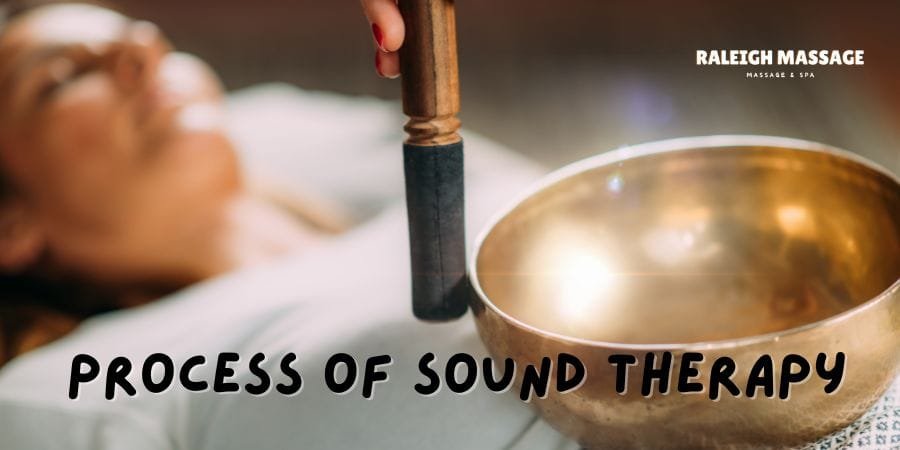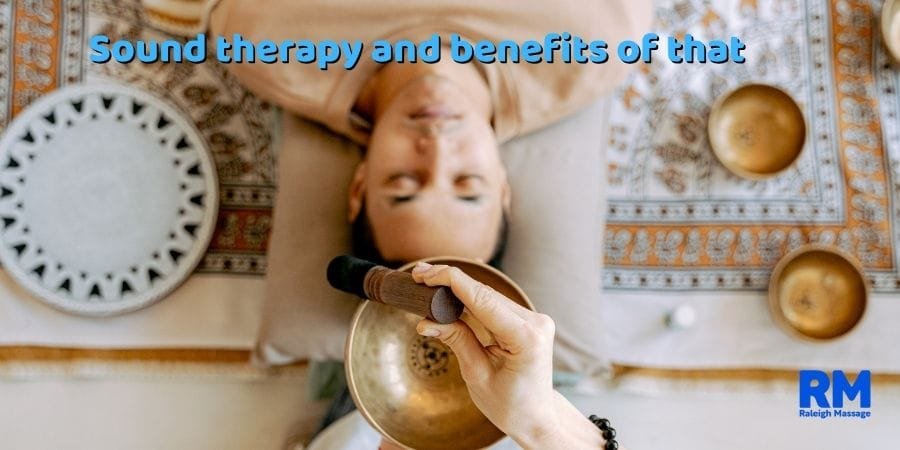Sound therapy, also known as acoustic therapy or sound healing, is a therapy that utilizes sound waves and vibrations to improve physical and emotional health and well-being. This ancient practice, which originated in many cultures and traditions, makes use of a range of instruments such as tuning forks, gongs, singing bowls, and the human voice to produce harmonious sound. Such vibrations and sounds are purported to improve mental clarity, reduce stress, reduce symptoms of anxiety, and even physical pain. The premise of sound therapy is that all matter, including the human body, vibrates at different frequencies, and that these sound waves can interact with our body’s vibrations to balance and heal it. Sessions usually see participants lying down or sitting comfortably while the therapist plays the instruments, bathing them in soothing, resonant soundscapes. This immersive listening is purported to bring on deep states of relaxation, meditative awareness, and improve the body’s natural healing processes.
Origin and history of sound therapy
The history of sound therapy is rich and spans various cultures and epochs, reflecting a universal recognition of sound’s profound impact on human health and well-being. Its roots can be traced back to ancient civilizations, including those of India, Greece, Egypt, and China.
In ancient India, sound healing was a part of the Vedic tradition. Mantras (sacred words or sounds) and ragas (musical modes or scales) were used to balance body and mind. It was closely related to Ayurveda, the Indian traditional system of medicine.
The ancient Greeks also used sound to heal. The philosopher Pythagoras, who is sometimes referred to as the father of music therapy, used music as medicine. He believed in the concept of “music of the spheres,” which suggested that harmonious music could heal the body and emotions. He used specific musical scales and rhythms to induce sleep, aid digestion, and calm the mind.
In ancient Egypt, sound was used in the form of chanting and vowel sound chanting in healing rituals. These were reputed to balance and align the chakras, or energy centers in the body, and were usually performed in resonant buildings like the pyramids, where the acoustics were conducive to this sort of therapy.
Similarly, in traditional Chinese medicine, music, and sound were utilized to balance the flow of Qi (vital energy) in the body. Different musical tones were associated with different organs and were used to promote healing and maintain balance.
In Indigenous cultures across the globe, from Africa, to Australia (didgeridoo), to North American societies, sound has been used in healing ceremonies and rituals for thousands of years. Sound practices such as drumming and chanting are integral to these traditions of healing.
Today, sound therapy is practicing with such ancient practices combined with modern scientific knowledge. The therapeutic power of sound experienced resurgence in the 20th century, when researchers began examining the physiological and psychological effects that sound and vibration have on the human body. Nowadays sound therapy is regarded as a complementary modality of holistic medicine with different types of sound therapy such as music therapy, binaural beats, and use of specific instruments like tuning forks and singing bowls practiced around the world. The combination of this ancient wisdom with modern science is still evolving and offering new approaches to health and healing with sound.
Process of sound therapy
Sound therapy is not a single process, but rather a series of approaches and techniques that aim to help the body and mind heal through the use of sound, ultimately leading to relaxation and balance. Though it can differ based on what type of sound therapy is being practiced, the process typically involves these main components:
- Assessment: The sound therapist will usually start with an initial conversation to discuss the individual’s physical, emotional, and mental well-being. This might include discussing symptoms, health history, and explicit goals for the therapy session.
- Setting the Scene: Therapy is often conducted in a calm, comfortable environment suitable for relaxation and reflection. The setting may be nice and dimly lit, the patients comfortable, either in reclining seats or lying on beds, possibly using aromatherapy.
- Instrument: Depending on the sound healer the instruments used may vary however such as: Common instruments are tuning forks, singing bowls (metal or crystal), gongs, drums, chimes, and even the human voice (chanting or toning).
- Application of Sound: The therapist strikes the instruments in specific ways, often initiating the sound journey with a sequence of tones that encourage extremely relaxed states. The mess of sounds and vibrations resonates from the instruments and wraps the person within a musical world. The therapist may employ specific types of sounds, melodies, harmonies, and frequencies that have innate therapeutic qualities.
- Functional State: The person being treated is generally in a suggestive, meditative state, either lying or sitting comfortably. They’re invited to listen closely, letting the sonic stimulus affect their thoughts and bodies. This can result in deep relaxation, meditation or even altered states of consciousness.
- When sound frequencies activate the deepest cellular levels amplification the capabilities in healing. This interaction is thought to contribute to reestablishing balance and harmony within the body’s systems. The harmonics produced by musical Instruments have a stabilizing effect on the energies in your physical body and can help realign/tune various chakras and/or energy centers.
- Integration and Reflection — Following a sound session, there is often a period of silence and stillness in which the sound participant can integrate the experience. Afterwards, the therapist might invite him to reflect on or share the experience and this will help the individual process and make sense of anything emotionally, intellectually or somatically arising during the session.
- Progressive Sessions and Customizations: From here, several sessions may be proposed based on the key objectives of the individual and how they are adapting to the psychokinesiology therapy. The selection of instruments, techniques, and frequencies depends on feedback and changing requirements; therefore, the therapist may also tailor them accordingly.
The therapist makes certain that the individuals are safe and well-supported throughout, and that there is no judgment about their personal experiences or reactions to the sound therapy. But ultimately the goal in mind is to heal through the use of sound and vibration physically, emotionally, mentally and spiritually. Anyone who listens to music knows instinctively that sound matters in our emotional lives, but it is not clear how music tracks with our happiness or calm or vitality and healing. Originally sound massage goes back to the India, China, Japan, Thailand, and Himalaya. Sound is an easy low impact therapeutic massage. Body cells can balance with the help of Sound therapy. The therapeutic application of sound has been established in medicine, business, education, and counseling and therapy in Europe for quite some time.
Benefits of sound therapy
Sound massage therapy is a practice that utilizes varying aspects of sound and vibration as a means of improving and cultivating better health and wellbeing. So, one of the important benefits that Palo Alto hosts are:
- Improved Mental Health: Sound therapy has been shown to decrease stress and anxiety levels almost immediately. The sounds and vibrations can also naturally help you to reach a state of deep relaxation, quieting the mind, and calming stress markers in the body.
- Better Sleep: Sound therapy has been known to help facilitate better sleep. Such sounds have a soothing effect over the mind, thus, it helps you in a big way in steering clear of sleep disorders like insomnia and ensures deep and relaxed sleep.
- Improved Emotional State: The session may provide emotional release and healing. It’s often used as an adjunct therapy to treat depression and anxiety, which can enhance mood and promote a sense of peace and well-being.
- Improved Focus and Concentration: Sound therapy can stimulate the relaxation response, leading to increased focus and concentration. It helps people with attention disorders or anyone who should cut down mental clutter to improve cognitive performance.
- Pain Management: According to some studies, sound therapy also aids pain management. The vibrations can change pain perception process and alleviate chronic pain conditions, such as headaches, fibromyalgia, and muscle tension.
- Aligning Energy Centers: Sound therapy is said to assist in balancing and aligning the body’s energy centers, also known as chakras, in metaphysical practices that center around the body’s energy systems, related to health and vitality.
- Enhanced Immunity: An improvement in the body’s immunity with the help of relaxation and reduction of stress. By relieving stress, sound therapy can secondarily enhance the immune system’s functionality.”
- Enhanced Emotional Release and Self-Awareness: The therapy allows the participants to travel to a very deep meditative state and encourages them with introspection, awareness of self, and emotional release, that is crucial for personal growth and the mental health of the individual.
- Boosted creativity and problem-solving skills: Sound therapy helps in clearing the mind of stress and anxiety and opens up cognitive pathways, thereby enhancing creativity and eliminating the ability to solve complex problems.
- Physical Healing — While further research is still needed, sound therapy does appear to assist in physical healing on a cellular scale, which may support recovery from certain ailments and injuries.
Sound therapy is not THE cure or all the healing my friend. For any specific health issue, you should consult with your healthcare professionals in addition to exploring sound therapy options.
If you need this type of sound massage therapy, you can choose Raleigh massage on Wake Forest, North Carolina.










